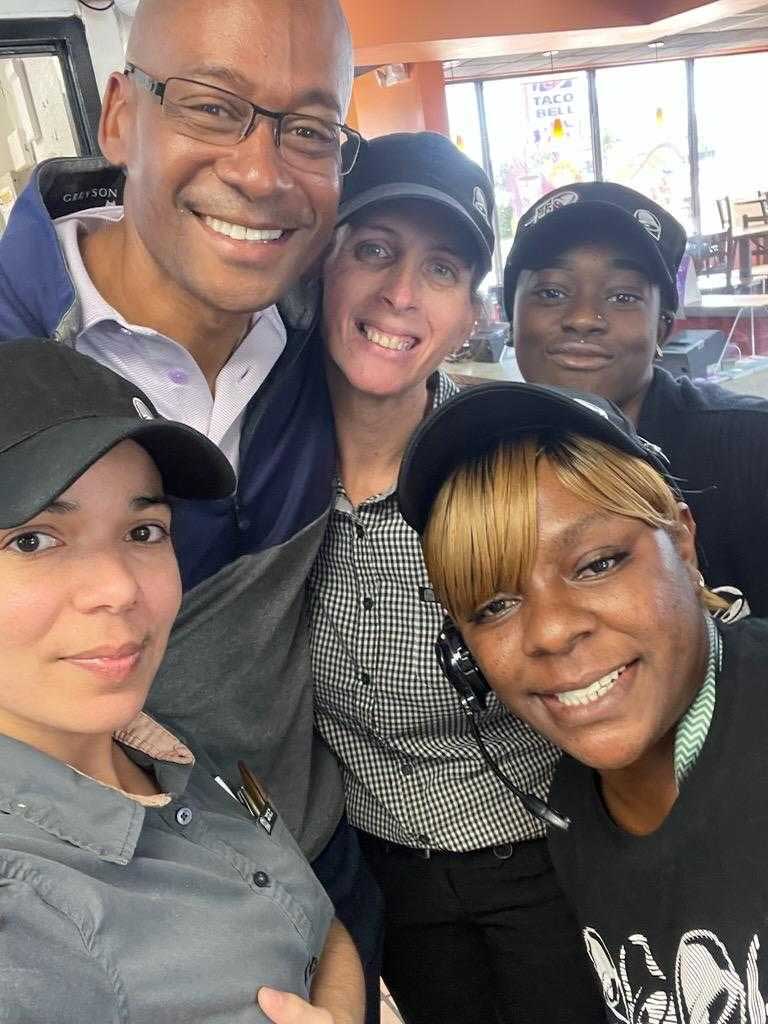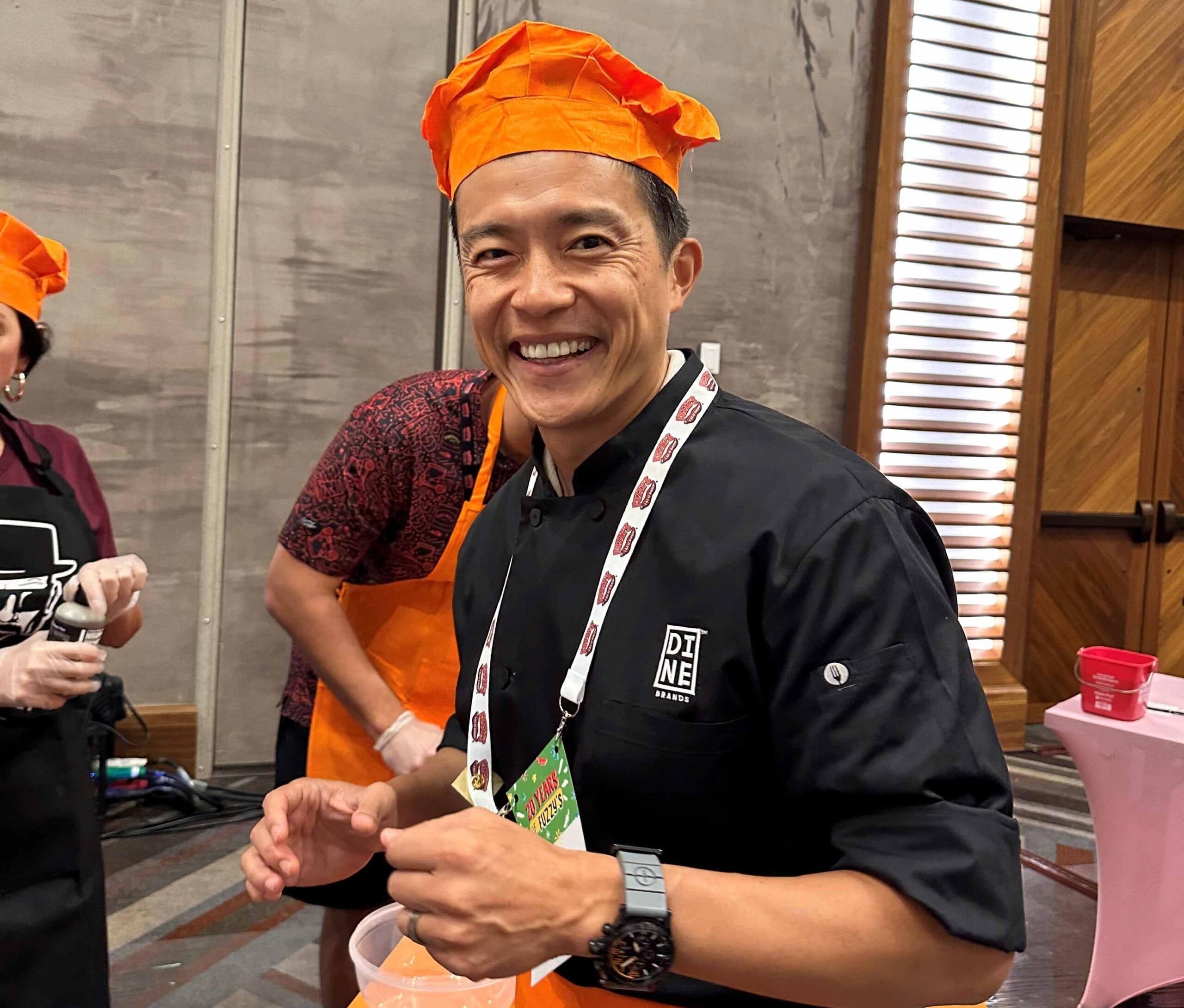Since the rise of the Golden Arches in the 1950s, chain restaurants have been a treasured American tradition. Whether grabbing a quesadilla on a road trip or ordering a burger at a drive-thru, customers count on quick service and reliability. In 2024, franchisees are bringing fast food into the age of AI, with benefits for both customers and employees.
Brian Ellerson WG99 owns 38 Taco Bells across Orlando, Tampa, and St. Petersburg. After 20 years on Wall Street, Ellerson got into franchising because he wanted to run his own business and manage his own cash flow. While technology is changing his industry, the core value proposition remains the same. “People will pay for consistency,” Ellerson says. “Like in any relationship, you want consistency.”
Today, food dominates franchising as a whole, with “Quick Service Restaurants” and full-service restaurants accounting for more than 67 percent of all franchise employment, according to the 2023 Franchising Economic Outlook. But the dance between franchisees and their parent companies is a delicate one, especially when tech comes into play.
KFC’s chief digital transformation officer, Nitin Chaturvedi WG07, describes that company’s relationship to franchisees as “freedom within a framework.” His goal is to modernize all of KFC’s 35,000 locations, ensuring that each one is driven by data and AI. “We basically say [to our franchises], ‘This is our digital strategy; let’s align on that. These are the products that will bring that strategy to life; let’s align on that,” Chaturvedi explains.

AI and other innovations pose risks to the massive scale of chain restaurants because they’re often unproven and expensive. Ellerson spent $20,000 per store installing digital menu boards following a mandate from Taco Bell. As a result, he says now it’s much easier for employees to change signage when new items come in and the customer experience is improved as the boards are brighter and cleaner.
From the corporate perspective, Chaturvedi is experimenting with innovations for KFC franchises. His strategy is to modernize the pieces that drive the most value in the business, such as e-commerce platforms. The company has yet to implement AI-voiced drive-thrus, but one store in Thailand is 100 percent digital, meaning all orders are placed via app or at a kiosk, with customers picking up their own food. (In most KFC locations across the globe, a lobby host is available to assist with the kiosk.) Chaturvedi says removing the counter ordering system adds to the customer experience by making the process quicker. On the team-member side, Chaturvedi is rolling out an app that will automate many rote tasks, such as counting inventory, in hopes of affording employees more time with the consumer. “The role of technology and even AI is to help people do what people do best, which is focus on other people, not on tasks,” he says.
Vance Chang WG07, CFO of Dine Brands Global, which includes sit-down restaurants Applebee’s and IHOP, says the casual-dining company has a similar employee-centric approach when implementing technology. Waitstaff recently switched to taking orders on tablets, which eliminates the strain of writing down orders and allows employees more time to connect with patrons — and thus ultimately increase their tip amounts. Chang also points to IHOP’s loyalty program, which celebrates member birthdays and creates a Cheers-esque neighborhood feel for regulars. “It’s hard to execute that sort of intimacy and knowledge of your guests without technology,” says Chang.

Brian Ellerson WG99 with a few of his 1,250 Taco Bell team members.
But any technology is only as good as the employees using it. The Bureau of Labor Statistics reports that there were 3.6 million fast-food workers in the U.S. as of May 2023. Ellerson, one of the largest minority Taco Bell franchisee owners in the country, hopes to inspire talented team members from underrepresented backgrounds to climb the ranks. “I challenge them not on how to make tacos, but on how to become leaders,” says Ellerson, who places particular focus on employee development and retention among his staff of 1,250. With an average turnover rate of over 100 percent, he’s thankful for some of the advantages technology can bring to human capital. “If we can automate some manual aspects of the job, the job becomes easier and more rewarding,” he says. “People are more likely to stay, because the environment is better.”
And happier employees lead to satisfied customers. Chang says that while Dine Brands uses its scale — 3,600 locations and $8 billion in sales — to invest in modern technology, the recipe for creating value isn’t much different than it was decades ago: “It’s abundance, it’s quality, and it’s also experience. Those three things combined need to be more than what you’re paying, so that after your meal, you feel like you got your money’s worth.”


























